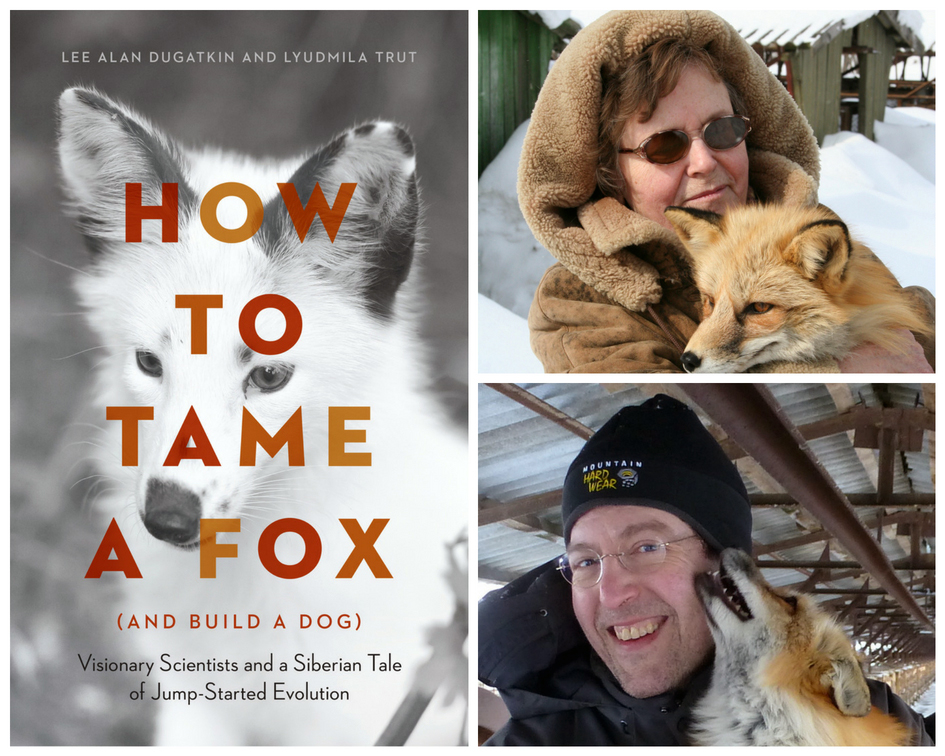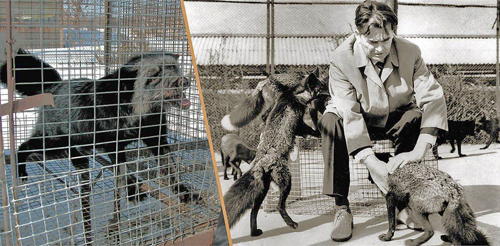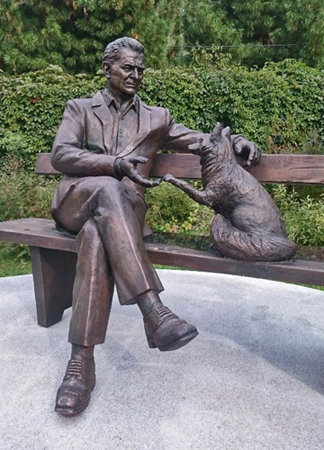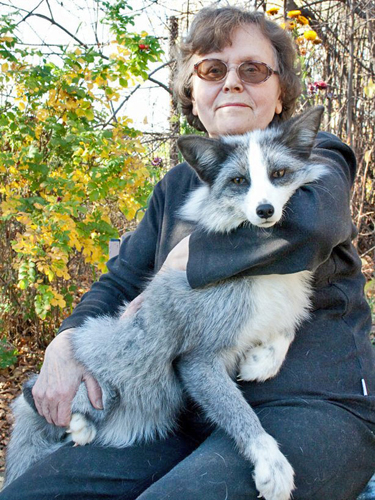In this Post
From the Editor: A Cautionary Tale
Media Review: How to Tame a Fox:
(and Build a Dog)
The Qimuksiq Network’s Iqaluit Meeting
Qimmeerukkaluarpat: When the Dogs are Gone
The Peary-MacMillan Arctic Museum: Dogs at Work in the North
From the Editor: A Cautionary Tale
Media Review: How to Tame a Fox:
(and Build a Dog)
The Qimuksiq Network’s Iqaluit Meeting
Qimmeerukkaluarpat: When the Dogs are Gone
The Peary-MacMillan Arctic Museum: Dogs at Work in the North
Navigating This Site
Index of articles by subject
Index of Journal editions by
volume number
Index of PostScript editions by publication number
Search The Fan Hitch
Articles to download and print
Ordering Ken MacRury's Thesis
Our comprehensive list of resources
Defining the Inuit Dog
Talk to The Fan Hitch
Shop & Support Center
The Fan Hitch home page
Index of articles by subject
Index of Journal editions by
volume number
Index of PostScript editions by publication number
Search The Fan Hitch
Articles to download and print
Ordering Ken MacRury's Thesis
Our comprehensive list of resources
Defining the Inuit Dog
Talk to The Fan Hitch
Shop & Support Center
The Fan Hitch home page
Editor's/Publisher's
Statement
Editor: Sue Hamilton
Webmaster: Mark Hamilton
The Fan Hitch Website and
Publications of the Inuit Sled Dog– the
quarterly Journal (retired
in 2018) and PostScript – are dedicated to the aboriginal
landrace traditional Inuit Sled Dog as well as
related Inuit culture and traditions.
PostScript is
published intermittently as
material becomes available. Online access is
free at: https://thefanhitch.org.
PostScript welcomes your
letters, stories, comments and suggestions.
The editorial staff reserves the right to
edit submissions used for publication.
Contents of The Fan Hitch Website and its publications are protected by international copyright laws. No photo, drawing or text may be reproduced in any form without written consent. Webmasters please note: written consent is necessary before linking this site to yours! Please forward requests to Sue Hamilton, 55 Town Line Rd., Harwinton, Connecticut 06791, USA or mail@thefanhitch.org
Contents of The Fan Hitch Website and its publications are protected by international copyright laws. No photo, drawing or text may be reproduced in any form without written consent. Webmasters please note: written consent is necessary before linking this site to yours! Please forward requests to Sue Hamilton, 55 Town Line Rd., Harwinton, Connecticut 06791, USA or mail@thefanhitch.org

left: Courtesy of the
Institute of Cytology and Genetics
Upper right: Lyudmila Trut courtesy of Vasily Kovaly
Lower right: Lee Alan Dugatkin courtesy of Aaron Dugatkin
How to Tame a Fox: (and Build a Dog)
Visionary Scientists and a Siberian Tale of Jump-Started Evolution
by Lee Alan Dugatkin and Lyudmila Trut
reviewed by Sue Hamilton
Upper right: Lyudmila Trut courtesy of Vasily Kovaly
Lower right: Lee Alan Dugatkin courtesy of Aaron Dugatkin
How to Tame a Fox: (and Build a Dog)
Visionary Scientists and a Siberian Tale of Jump-Started Evolution
by Lee Alan Dugatkin and Lyudmila Trut
reviewed by Sue Hamilton
How to Tame a Fox (and Build a Dog): Visionary Scientists and a Siberian Tale of Jump-Started Evolution is not simply about turning a snarling, aggressive animal into a compliant human-oriented dog-like pet. It is a riveting account that winds its way through a dangerous political landscape and the frontiers of scientific discovery (Watson and Crick had only just uncovered the structure of DNA), describing the highs, and some lows, of a huge body of work that remains to this day a spectacular achievement.
During Stalin’s rule, Soviet dogma controlled the scientific community, dictating what would or would not be studied. Those who defied this political oppression with so much as a whisper of genetics were banished, jailed or killed. Thirty-five-year-old Dmitry Belyaev (1917-1985), a man of extraordinary charisma, political savvy and fearless determination, avoided the fate of other scientists, including that of his murdered brother, and began his fox domestication project in 1952 by claiming its purpose was to breed better foxes for the Soviet Union’s lucrative fur trade. Under the supervision of the one person Belyaev entrusted to be the hands-on lead investigator, the young and enthusiastic graduate student, Lydumila Trut, foxes were carefully assessed in a standardized way and then selected for breeding based on reactions they demonstrated to human presence.
After Stalin’s death in 1953, his successor, Nikita Khrushchev’s hard line attitude towards the study of genetics softened. Belyaev was well-respected. With great interpersonal skills and having already earned a reputation for producing high quality fox pelts, he was permitted to undertake his large-scale fox domestication experiment. The government that only recently would have punished him for his theories on genetics, now supported him.
Based on selection of temperament alone, features that had been naturally suppressed in wild foxes began to emerge in just three generations after the first mating in 1960. Belyaev postulated that alterations in reproductive physiology, phenotype, dog-like behavior and even cognitive abilities – all characteristics of domesticate animals – were the result of selection and breeding for tameness only. Belyaev later identified this process of turning on inactive genes as destabilization selection.

From wild (left) silver foxes ready to attack when approached to
domestic foxes (right) enjoying social interaction with their “mentor” Dmitry Belyaev
From Science
First Hand
In succeeding generations, the percentage of foxes born and assigned the “elite” classification escalated dramatically. These special foxes demonstrated an array of dog-like behaviors (licking and nuzzling human hands, rolling over for belly rubs, vocalizing in a way that was interpreted as soliciting human attention, wagging tails) and appearance (blue eyes, curled tails, changes in coat colors and patterns, floppy ears). There were anatomical and reproductive changes as well. These animals were a far cry from the “dragons” that Dr. Trut called the most savage of the wild foxes not chosen for the domestication project.
Belyaev and Trut turned their attention to the endocrine system and the study of hormones as the likely reason for these astonishing alterations in physiology, behavior and appearance. Although unsure how it happened, they felt that hormones such as epinephrine, cortisol, adrenalin, serotonin were responsible. They compared their levels in the aggressive versus the elite groups. The results proved the researchers were right. Genes were being activated or deactivated (not mutated) during the selection for tameness.
“Natural selection had stabilized the hormonal recipe for building a fox and its behavior in the wild. Now the selection for tameness, that he [Belyaev] and Lyudmila were imposing was destabilizing that formula.” (page 60)The fox domestication project gained increasing favorable attention within the Soviet Union. And with the relaxation of communication and travel into and outside of its own borders, the fox domestication research gained much worldwide notice and support. After Belyaev’s death in 1985, Lyudmila Trut assumed leadership of the work. There was still so much to discover, to learn. But in 1987 the Berlin wall fell and the Soviet Union’s political landscape began to change radically. Economic chaos ensued. Funding for the project dried up. By 1999 the precious fox population plummeted from several hundreds to a mere 130. The situation was dire. It was Lyudmila Trut’s impassioned article published in the American Scientist and the subsequent international aid that spared the remaining foxes and the program itself from extinction.
“…when you radically change selection pressures by choosing the tamest animals you shake up everything, and a whole suite of changes follow.” (page 74)
Dr. Lyudmila Trut with a domesticated fox in Siberia Photo: Dan Child
The mission has since thrived and continues to this day. Lyudmila Trut, Doctor of Biology, professor, and senior researcher of the Institute of Cytology and Genetics, SB RAS (Novosibirsk), continues as director of the fox program. Current activities and goals include: continued study of changes in behavior, hormones, anatomy; investigating implications for the transition from wolf to dog and also that of human evolution; exploring social behaviors of other species; fox gene sequencing and identifying chromosomes that play a role in the process of domestication; identify genes and networks involved in regulation of tame and aggressive behavior; and studying the neural crest (stem) cell in destabilization selection that transitioned a wild fox to a tame one. Worldwide collaborations have developed among biologists and ethologists in the quest to solve the mysteries of domestication.
Belyaev’s and Trut’s fox domestication research, begun in the mid-twentieth century, may have set out with a seemingly simple goal, but along the way, it journeyed along many paths. In their book How to Tame a Fox (and Build a Dog), authors Lee Dugatkin an Lyudmila Trut go beyond the title’s extraordinary tale to share with readers an engaging account of how the consequences of domesticating a fox affect the rest of the animal kingdom, including Homo sapiens. How to Tame a Fox (and Build a Dog), is not only a splendid narrative that scientists and non-scientists can enjoy, it should be considered required reading for anyone who breeds animals in order that the all the ramifications of doing so are well understood.
How to Tame a Fox (and Build a Dog): Visionary Scientists and a Siberian Tale of Jump-Started Evolution by Lee Alan Dugatkin and Lyudmila Trut, 2017, University of Chicago Press, ISBN-13: 978-0-226-44418-5; 216 pages, 6 inches by 9 inches in hard and soft cover formats; also as an e-book; available from retail book stores, on line sellers and the University of Chicago Press.
Addendum
Both under Trut’s administration, and prior to Belyaev’s passing, the project received several rewards for excellence:
• Gold and Silver medals of the Exhibition of Economic Achievements of the USSR (Domesticated foxes)
• N. I. Vavilov Prize (1982);
• Prize of the Presidium of the Academy of Sciences of the USSR named acad. N.I. Vavilov (1985)
• The Order of the Badge of Honor Silver and Gold Medals of the VDNKh (Exhibition of Achievements of National Economy), (August 21, 1986)
• Honored Science Worker of the Russian Federation (2005)
• And…
Near the end of his life, Dmitry Belyaev regretted not having had the opportunity to “…write a book on domestication…and the book was supposed to be popular…He wanted to tell stories, to the layman, anyone…what processes had underlain domestication…” (Lyudmila Trut, page 150). In June 2018 co-authors Lee Alan Dugatkin and Lyudmila Trut’s book How to Tame a Fox (and Build a Dog): Visionary Scientists and a Siberian Tale of Jump-Started Evolution, was awarded the American Association for the Advancement of Science (AAAS)/Subaru Science Books & Film Prizes for Excellence in Science Books. You can read Trut’s acceptance comments here and you can see the award acceptance video she delivered from Novosibirsk here.
The dedication page of How to Tame a Fox (and Build a Dog): Visionary Scientists and a Siberian Tale of Jump-Started Evolution reads:
“Dedicated to the memory of Dmitri
Belyaev,
the visionary scientist, charismatic leader,
and kind soul behind it all.”
the visionary scientist, charismatic leader,
and kind soul behind it all.”

Dmitry Belyaev and
one of his tame foxes sharing a moment.
This monument was
unveiled In Novosibirsk, Western Siberia June 2,
2018
Photo: Sirozha/Wikimedia/CC by SA 4.0
Photo: Sirozha/Wikimedia/CC by SA 4.0
